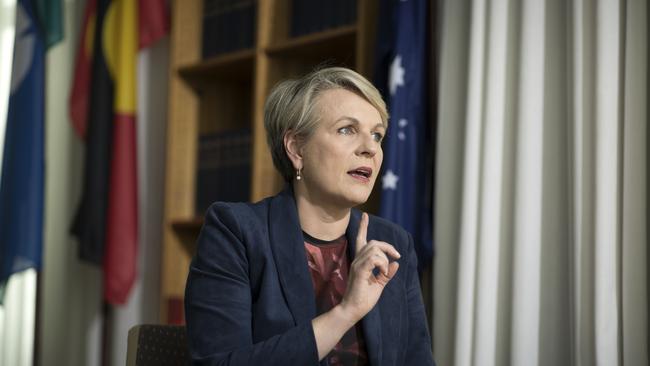Perdaman urea plant given green light
Construction on a urea fertiliser plant in WA will go ahead after the Environment Minister listened to the views of the five Traditional Owner groups.
Domestic urea production will go ahead in Western Australia after Federal Environment Minister Tanya Plibersek ended a month-long impasse halting construction of the $4.5b fertiliser plant to assess claims of potential damage to ancient rock art.
The Perdaman Chemicals and Fertilisers Karratha urea fertiliser plant was slated as Australia’s first “world scale” urea plant converting gas into urea when production commences in late 2025.
But work ground to a halt in June when Save Our Songlines, a Traditional Owners group opposed to the project, wrote to Ms Plibersek calling on her to invoke a Section 9 declaration under the Aboriginal and Torres Strait Islander Heritage Protection Act to protect five significant Aboriginal sites.

The Minister asked Perdaman to pause construction while she visited the sites and considered appeals from the Traditional Owners over claims of potential damage to ancient rock art.
On Tuesday, Ms Plibersek said she would not make a Section 9 declaration after meeting with the five Traditional Owner groups in the region who have struck agreements with Perdaman about the appropriate cultural treatment of the sites.
“I have taken time to carefully consider this decision. I have visited the sites in question and met with the parties involved in, and directly affected by, my decision,” she said.
“After visiting the sites and meeting with stakeholders, I recognise the Murujuga Aboriginal Corporation and their Circle of Elders as the most representative organisation for the five Traditional Owner groups in the region.
“Traditional Owners – like any group – can sometimes have different views. I am satisfied, however, that the MAC is the legally constituted and democratically elected group that safeguards First Nations’ culture in the Burrup area.”
Farming lobby groups have hailed the Minister’s decision as a win for the sector, which has battled soaring input costs – fertiliser costs have doubled since the pandemic – and supply chain issues restricting its availability.
Dairy Farmers Australia said the nation must urgently expand domestic urea production to secure supply and stabilise fertiliser prices.
“ADF has been advocating for the importance of shoring up Australia’s fertiliser production directly to Minister Plibersek and has lobbied for exploration and development of fertiliser production in Australia,” the organisation said in a statement.
Grain Growers chairman Brett Hosking said the industry would inherit the plant’s emissions – estimated by WA’s Environment Protection Authority to be 52 million tonnes of CO2 over the 80-year life of the project – but it would provide an overall net benefit to the industry.
“Nearly 38.6 per cent of the emissions created in producing grain come from scope 3 emissions, so the inputs we buy like urea fertiliser. But we have set a target to halve those emissions by 2040 and we believe as technology improves that’s an achievable goal,” he said.
The project is expected to produce 2.3 million tonnes of urea a year, about 96 per cent of the urea Australia currently imports.
Half of the Burrup Peninsula is zoned industrial while the other half, about 5000ha, is national park and National Heritage listed, home to millions of significant Aboriginal sites, sometimes referred to as petroglyphs, with some as old as 30,000 years.





